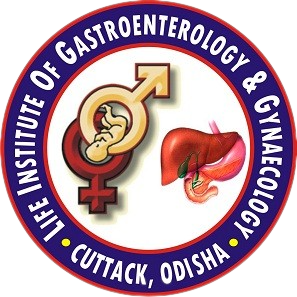The biliary system is crucial for digestion. It moves bile, a digestive juice, from the liver to the small intestine, helping digest fats. This system’s smooth functioning is essential for good health.
A choledochal cyst is a rare problem of the bile ducts. These cysts are unusual enlargements or bulges in the bile duct and need attention.
Why should we care? Understanding what is choledochal cysts means knowing the signs early. This blog helps you grasp the nature of these cysts and encourages getting timely help. Let’s dive deeper into this topic to ensure better health.
Understanding Choledochal Cysts, Symptoms & Risks
Choledochal cysts mean the ducts, which carry bile from the liver, have balloon-like swellings. There are different types, depending on where these swellings occur.
Knowing the type is vital as it guides us in how to address them. Common choledochal cyst symptoms are:
- Belly aches
- Yellowing of skin or eyes (jaundice)
- Feeling of a bloated belly
- Fever
- Possible infections from blockages
But what happens if we ignore them? The risk factors for choledochal cysts can lead to severe issues. These include bile duct blockages, liver damage, and even an increased risk of cancer. Recognizing and acting on choledochal cyst symptoms can prevent these from getting worse.
How Are Choledochal Cysts Diagnosed and Treated?
Choledochal cysts diagnosis involves various tests. Doctors might feel the belly, use imaging tests like ultrasounds, CT scans, or MRIs. These modern tools make spotting the problem early less risky.
Once identified, what’s next? Choledochal cysts treatment often means operation. Surgical removal of choledochal cysts requires expert medical care. Sometimes, the ducts need to be rebuilt, ensuring bile flows smoothly again.
By removing the cyst, they avoid future troubles. The choledochal cyst surgery time varies based on each person’s needs, but prompt action is always best. Catching it sooner rather than later is crucial so that surgery and recovery are effective.
Living with and Preventing the Progression of Choledochal Cysts
After surgery, living with this condition means staying on top of health. Regular visits to the doctor are crucial.
Family history can be a hint. If a family member had it, early checking is a good idea.
Avoiding further problems involves:
- Reporting any new signs right away
- Stick to a regular check-up schedule
This approach ensures we catch any issues before they grow. Being open about any worries with health providers is important too.
In conclusion, understanding what is choledochal cysts matters. By knowing about choledochal cyst symptoms and the choledochal cysts treatment available, we arm ourselves with the right tools to act fast. Always reach out to a healthcare expert for guidance and stay proactive about health discussions.
Choledochal cysts are rare bile duct abnormalities that can lead to complications such as infections, bile duct stones, or even pancreatitis if left untreated. Early detection and proper management are crucial to prevent severe health issues. If you suspect you have a choledochal cyst or are experiencing symptoms like abdominal pain or jaundice, it’s important to seek medical attention.
LIGG (Laparoscopic Institute of Gastrointestinal and General Surgery) specializes in the diagnosis and treatment of choledochal cysts, offering advanced minimally invasive techniques for optimal outcomes.
Don’t wait—consult LIGG today for expert care and treatment tailored to your needs.

